Promotional videos are a top forms of online mass communication desired by internet users. Any organizations with a website is aware that having online video is needed – consumers demand it. Fortunately, with inexpensive cameras, powerful mobile devices and high speed internet, promotional videos are easier than ever to create, distribute and view!
This guide is made to be easy to understand. As a video producer as well as instructor and marketer, I have developed this in-depth guide so that it can be used by anyone. By the end, you will understand what goes into making and marketing a promotional video – you will be able to use video to promote your business, school, organization or yourself across the world!
Do not worry, just because video production might appear complicated at first glance, by following these steps as they're explained, you can be learn what goes into an effective promotional video. If you're too busy to read the whole guide now, be sure to bookmark or sign up to the newsletter so you can continue on later.
For now, let's get started:
The 5 Steps: How to Make a Promotional Video
-
Step 1: Strategic Planning:
Identifying purpose and strategic goals to the story.
You’ll want to consider the goals of your video: create a creative brief, and story outline; consider the goals, genre, and audience of your video; work out a script, story board, and budget. -
Step 2: Pre-Production:
Planning the technical aspects to creating and filming the video.
Once you’ve determined your strategic goals, it’s time to flesh out how you’re going to achieve them and develop a concrete plan for how to produce the video from a technical standpoint. -
Step 3: Production:
Filming your Promotional Video.
Now that you’ve got a plan, it’s time to put it into action. Here’s where you actually visit the location with your crew, get your interview subjects ready, setup the camera, lights and audio equipment and film your promotional video. -
Step 4: Post-Production:
Editing your Promotional Video.
Now that you’ve shot the video, it's time to import the clips, edit them together with editing app, add music and graphics and fine-tuning the visuals and sound. -
Step 5: Distribution & Marketing:
Distributing and sharing your Promotional Video.
Once you’ve got your video nice and polished through editing, you’ll need to distribute and promote the video through the media, search-engine optimization (SEO), and sharing.
These are the five broad stages that professional video marketers use. One key difference to note here is that non-professional video producers tend to only focus on steps 2-4, the production stages, to the neglect of steps 1 and 5. Professional video marketers, on the other hand, spend time planning the grander vision in step 1, and then implement that vision in step 5, the distribution phase. In my experience, all 5 step are critical when creating and implementing your promotional video for it to achieve the highest possible level of success.
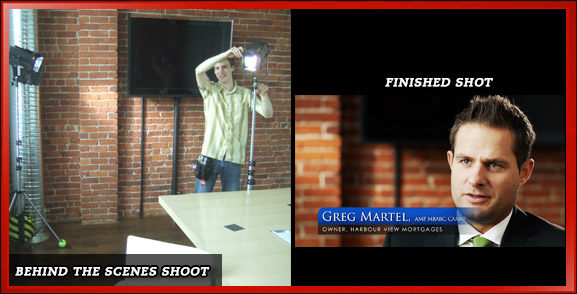
Written from examples my live instruction lessons, the information here is detailed and useful for entrepreneurs, large businesses, high-school and college students and non-profit agencies alike. From beginner to intermediate, if you're looking for a framework of how to make a promo video, you will find this guide of use.
Let's get in with the process:
Contents of the Guide: Good Promotional Video
Promotional Video Marketing has traditionally been a specialized field. Because you’re interested in learning how to make a promotional video, you will learn the basics for all areas of promotional video production and distribution:
- Choosing a Camera: Which camera to choose, depending on your budget
- Do-It-Yourself (DIY) Options: Whether to hire a company, or to do it yourself (DIY)
- Strategy: How to draft a video marketing strategy that really works
- Script Writing: How to easily write a script that works on camera
- Video Production: Video editing techniques, color-correction and more
- Editing: Learning how to use the right app to easily edit video properly
- Audio Production: How to record good sound on set and add narration afterwards
- Online Distribution: YouTube, marketing and how to get your video seen online
Video Production Gear
For many, video gear part is the most fun – here are the highlights that will be covered later:
- Video Lenses: 3 DSLR video lens types needed for success
- Video Tripods: The 3 types you need, and top recommendations
- Video Lights: Why use lighting, and how to light a video studio setup
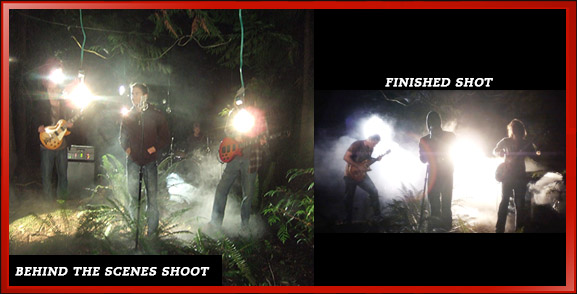
There’s lots of grounds to cover – and perhaps later you should jump ahead to the parts that interest you most and read those sections first – but not yet! If you want to succeed with any video project for business, it is absolutely vital that you must first do a little reflection and have a strategy in place. Please read this next part carefully, as it’s crucial to achieving maximum success.
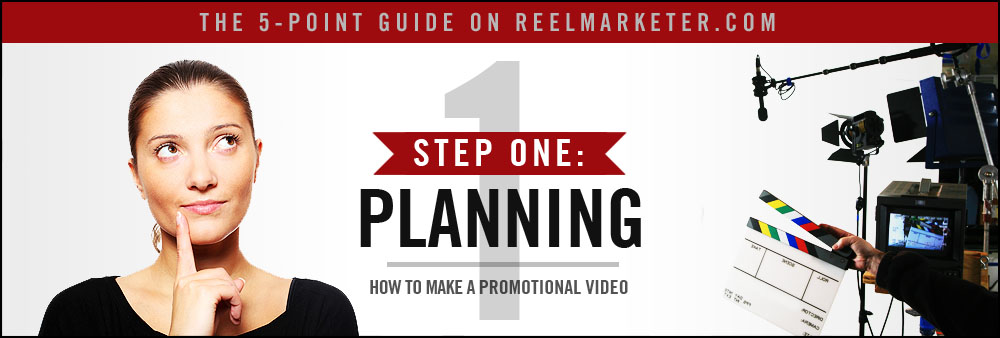
Step 1. Strategic Planning:
Choosing the Goals for your Promotional Video
Planning how your promotional video will perform it's magic is the first step to successful video creation. In the planning process, using tools and tricks of the trade, you discover what your video will need to actually do in order to be a success before you distribute, edit or even begin filming! Picking who you will talk to is the first step.
Know Your Audience
Time to start! This guide will take you through the top 5 points of how to make a promotional video, and then follow up with resources, expert advice, and interviews from personal seasoned professionals covering more specific questions!
Let’s start; here are the top solutions all in one article that will help make your video work:

How do you know your audience will actually click play on the video? Use a creative brief to find out what makes them take action.
A creative brief asks a series of questions with the aim of discovering the target audience, their wants and needs, and how best to motivate action.
Here, use the successful creative brief format I’ve used with my video production clients since I started my video production business. Use this for any project you start for yourself or your own video clients:
Creative Brief Promotional Video Questions:
- The Purpose: What is my main core objective? Pick just one primary goal!
- Single Thought: What is my main core message? Identify the key takeaway idea or action
- Target Viewers! Who is my primary target audience? Age? Sex? Interests? Income?
- Reach Your Audience: Where might I reach this audience? YouTube? TV Ads? Facebook Video? Video Podcasts?
- Call to Action: What is the single action you need to make?
To get started, start yoru video with a template for a creative brief here. Answering this brief’s questions will get you started.
Hands down, these are the most important ideas to begin with, period. I cannot stress this enough – answer these questions, and you’re well on your way.
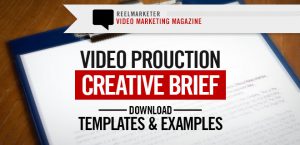
These are just core concepts, many more are covered in the newsletters with other experts and their articles on Reel Marketer. As tools such as quality cameras and Tripods are highly affordable these days, you must make sure the message itself is actionable. Pick one core message– be as specific as possible. (e.g. Non Profit – ask your target audience to donate).
Only when you're certain of your target audience and what they need to be compelled to act should you move ahead with your video. Bear in mind, promotional videos are unique in that they have a persuasive goal – by the end of the video, the viewer should feel compelled to a course of action or think differently about a topic. If your particular video has no persuasive goal at all, and is only being used to inform or educate, an educational video may be of better fit.
Choose Your Video Style
Now that you are aware that identifying who you’ll be speaking to, and what the message will be is half the battle, it’s now time to choose the how.
 The style says a lot; this is a case where the ‘medium is the message’, so have fun with it.
The style says a lot; this is a case where the ‘medium is the message’, so have fun with it.
You can be serious, or light hearted – both can work at different times, even for the same brand, providing the message fits the tone.
Be sure to take a look at YouTube for other videos that have a tone or feeling that you wish to convey, and borrow those styling cues.
Promotional Video Style Elements
- Tone: Lighthearted or Serious?
- People & Speech: ‘Talking Head’ Interview style or Professional Actor?
- Production Quality: Highly Polished Studio or Set, or, more shoot on On-Location?
- Scripted or Unscripted: Candid Q&A or Scripted and rehearsed questions?
- Video Quality: Often called “production value”. Various visual and technical attributes affect how the target viewers perceive a video’s tone.
Production value and attributes that affect quality are covered in great detail later on.
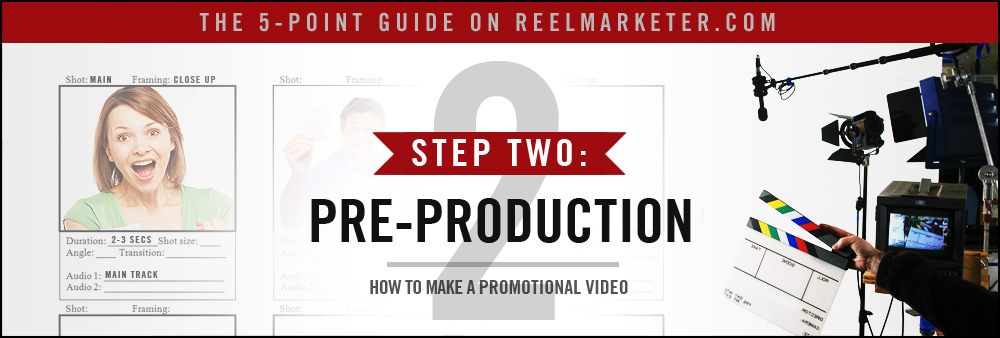
Step 2. Pre-Production: Establishing the Story, the Tools and Methods to Make the Video
Choosing a Promotional Video Genre
The genre of the video sets the tone and direct message about your idea, offering and business. Working with a creative person involved assists as a resourceful person can often connect abstract ideas more easily and help you make something that engages the viewer.
Tried and True Promotional Video Genres:
- Testimonial Videos: Interviews with people about their needs and how their expectations were met.
- Narrated Video: A female or male narrator‘s voice talks over the video, informing and educating.
- Company Spokesperson: Have your spokesperson do a ‘talking head’ video where they speak to the camera about the product or service offerings.
- Professional Actors: Actors ‘play out’ scenarios, or talk to the camera about the benefits.
- Explainer Videos: Combination of narration along with very simple animations to explain a message. “Whiteboard” videos are another alternative.
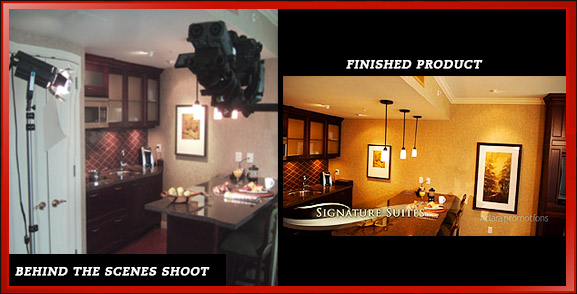
Each variety of video says a lot about the your intent and the service – choosing the right mix of elements is important for your video so that your viewer doesn’t get mixed messages.
Genre and style will also affect budget – the least expensive video uses no graphics or music, and just candid interviews, but typically has a lower impact than a video with higher production value. Does this all make sense so far? If you have any questions, post them here!
Production Value: Creating Better Video
Investing in higher production value helps a video be more persuasive.
A more polished production will make the best of all the tools; high quality camera work, professional lighting, narration, professional recorded audio, great music, great B-Roll footage and tight editing!
As an example, here’s a promotional video I created that has all of the production qualities above:
The processes that went into creation of this promotional video are entirely teachable; the production steps, equipment and creative processes will be explained.
So what attributes affect the perception of higher-end production?
Production Value: Imagery and Visuals
- Animated: Animated custom graphics, or simple “ken burns effect” photo graphics?
- Lenses: Will it be heavy on graphics and animation, and if so how will this affect your budget
- Graphics: Will it be heavy on graphics and animation, and if so how will this affect your budget?
These choices will largely flow from a study of the creative brief questions from above. Additionally, If you’re working with a promotional video company, be sure to consider these options with them – hold them accountable!
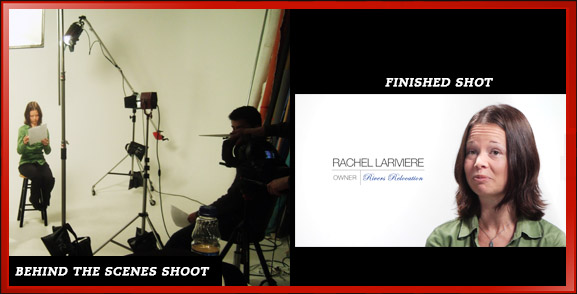
Production Value: Voice, Sound and Music
- Recorded On-Location Sound: Were external microphones used when recording the audio interviews on set? Was a boom mic used, or lapel microphones? Were the audio volume levels balanced with a mixer when recorded?
- Music: Royalty Free Background Music, Music, or no music at all?
Consult a professional if you’re unsure how to approach these questions, or ask your questions here.
How to Properly Invest in Yourself & Production
Online Media Marketing is getting high-tech, but the quality isn’t where it should be. In the past, businesses could get away with webcam videos shot in dark rooms. Those days are over.
Viewers won’t accept low quality video – if you create poor looking video, your competitor will have an answer – higher quality is the answer.
YouTube has moved to 4K and HD and so have expectations. Thankfully, 4K is easy to attain now – all iPhones shoot high quality video now.
Why Production Value and Quality Matters
 Production quality is important. Consumers only accept higher and higher quality continually driving expectations up higher. Twitter and Facebook users won’t bother with a low quality video and audio any longer.
Production quality is important. Consumers only accept higher and higher quality continually driving expectations up higher. Twitter and Facebook users won’t bother with a low quality video and audio any longer.
Remember: your promotional video represents your company much like a sales person, except the video can’t make up it excuses on the spot, it will have to stand up on it’s own! If a video can’t make the cut in the real world along side other high-end videos, count it as a lost investment.
Investing thousands into video production only to have the video a loss is a scary proposition. This fact reminds producers that they continually need to be aware of changing trends and standards to remain current.
Video Equipment: Essential Video and Audio Gear
Using video gear is exciting – these pieces of technology are the tools used to take an idea from concept to reality. Video production is enjoyable and creative, part art, part science. Some basic pieces are needed for a video to be made:
- Camera (iPhone, DSLR, or Video Camera)
- Computer (iMac, MacBook Pro, or even iPhone/iPad)
- Tripod (many tripod options)
- Microphone (Wired or Wireless)
- Headphones (over-ear with muffs to avoid background noise)
Video Cameras for Video Production
Modern cameras will do great 4K video, and HD – the standards in modern video. Beyond camera resolution, your choice really comes down to price. All the cameras below film in 1080P HD, with the highest budget offerings filming in 4K.
It’s also important to choose a camera that you can plug a microphone into, as audio is just as important as video (see microphone options below). All the camera options listed have audio input jacks.
Computers for Video Production Editing
The iMac or the MacBook Pro are great choices! If any computer can edit video these days, why spend more for a higher end model? The Mac Pro is the highest end model, but the iMac is nearly as fast, and has a built in screen, and less expensive – excellent computer.
Fewer limitations with speed and storage make a difference, especially with video post-production, which is inherently a very processor-intensive task for a computer and uses a lot of storage space.
Tripods for Video Production
What you should look for in a tripod is its ability to pan left-right and tilt up-down smoothly. The quality of the tripod is usually the distinguishing factor.
The Manfrotto is the budget model and it’s recommended to not go lower than this. Your video’s quality will likely suffer with anything less.
Microphones for Video Production
There are two options for external microphones for video production, a lavalier microphone (that clips onto the on-screen subject being recorded) and a directional ‘shot-gun’ microphone, which picks up the sound from whatever it is being pointed at.
The purpose of all microphones is to be really good at picking up sound – a microphone will always need to be plugged into a video camera (or audio recorder) for the audio to be recorded.
Lighting Options for Video Production
While on-camera lights common and inexpensive, they are best for documentary-style videos, not for professional looking promotional and advertising videos. The above pieces of equipment are borrowed from the ‘What Video Equipment Do I Need for Any Budget Level’ guide. The article does a side-by-side comparison of low budget, medium budget and high budget gear (click here to see it).
 If this is your first promotional vide, and you're looking to get a sense of how all the parts fit together, the ‘Low Budget’ gear list is an excellent place to start.
If this is your first promotional vide, and you're looking to get a sense of how all the parts fit together, the ‘Low Budget’ gear list is an excellent place to start.
However, if you already have some experience, or you are looking to jump-in and start with the proper gear a professional would use, you might look at the ‘Medium Budget' or even the ‘High Budget' items listed too.
Video Equipment: Additional Support Gear
- On-Camera Light (clips onto the camera and shines on people being interviewed)
- External Audio Recorder (Can be used to record better sound than the camera does)
- Headphones (to be able to listen to on-set recording)
You might also like:
- Zoom H4N 2 Channel Portable Audio Recorder
- Handheld Stabilized 4K Camera DJI OSMO 4K Camera
- Steadicam Smoothee for iPhone and GoPro
- Mic Adapter ECM with Audio Output
- iMovie for iOS
- Final Cut Pro for Mac OS X
- 2TB Seagate External USB 3.0 Hard Drive
5 Key Roles for Necessary for Successful Video Production
During video production, each of these roles is important when creating. In a small production, such as a one-man company, that one person will perform all of the tasks, but this doesn’t diminish each role’s importance.
As you read through this list, envision yourself in each role to feel a sense of the role.
A. The Director: The Visionary and Story Teller.
This is who we think of when we think of the ‘hollywood’ director. This person understands vision that knows what the story is to tell, the best genre and methods to conveying that message. The director ensures that the emotions that will convey action are present and get across to the end viewer – which is why in theory this is the most important role!
B. The Producer: The Organizer and Butt-Kicker
 The producer ensures all the elements for the production are procured and readied:
The producer ensures all the elements for the production are procured and readied:
The creative brief, a well defined script and story, perhaps a storyboard, a production checklist, set or location scouting, research, the gear, the crew, and a distribution strategy for when and how the video is released and shown.
The producer is the hub of the production.
They’re responsible for all the planning that needs to take place to start the ball rolling, get the video shot, and get it done as planned – on budget!
C. Visuals Professional. Lighting and Camera Operation
Quality camera, high-definition and 4K resolution, lighting, good composition, well-groomed interviewers or actors, broadcast graphic design, animation and color correction. The camera operator or director of photography controls elements that define the quality of the video’s visuals.
Investing in a top quality video will impress your clients, just as a low quality video will damage your reputation. Either way you will make an impression – make sure you are making the right one.
D. Audio Technician. Well Recorded & Mixed Sound.
Sound is more important than I can possible stress with written words. Put simply: Sound is more important than the moving image.
This goes for all processes regarding sound: recording voices on set, editing sound clips, and includes music, narration and sound effects. Viewers often accept mediocre visuals, but people will simply not tolerate poor sound. Both are important, but don’t risk shooting a video without a dedicated microphone and the knowledge of how to calibrate it properly.
E. Post-Production Technician. The Editor.
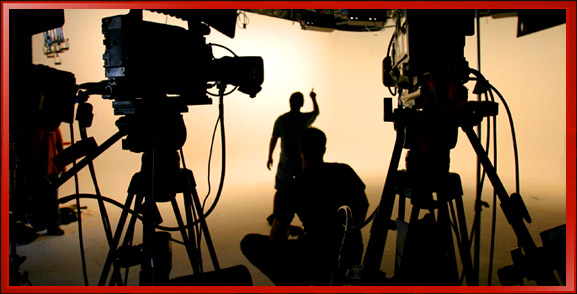 Video production in the end is a technical job. Production requires the right gear, used in the right manner to get to the goal result.
Video production in the end is a technical job. Production requires the right gear, used in the right manner to get to the goal result.
The video producer knows what to look for to get the video to all fit together and may be the most important to you, the director understands how the story or message will be told.
The audio and video technician(s) handle the image, sound and editing, capturing the video and sound and putting it all together as the director and producer planned – with the creative brief and producer guiding the process, of course.
These 5 roles can be performed by a handful of people, or often just one person, but breaking down the roles often increases the quality. In larger productions, such as a multiple-day commercial promotional shoot, a team of people will be tasked with these responsibilities.
4. Being Practical: The Big Choice when Producing Video
Now for the fun part!
With your video strategy complete, and goals readied, it’s time to get the promotional video actually made!
As covered earlier, a promotional video requires planning and preparation before the production starts. As many businesses investing in buying DSLR video cameras and production gear to start making videos in-house, these same businesses are beginning to realize how much work is actually spent in production.
Video productions require a lot of aspects to be lined up and ready to go; a location (or locations) reserved for shooting, a camera and camera operator, audio equipment and the technical know-how to use it, tripod and other camera support gear, lighting options (either reflectors or electric lights) and a spokesperson, interviewee or actor to be in front of the camera! Whew.. it sounds complicated, but doesn’t have to be.
But where do you come in?
You have two main options here:
Self-Produce Video vs. Hire a Video Producer
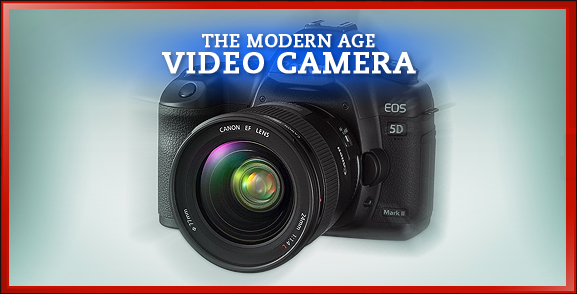 This decision is important, and the implications may not be immediately apparent.
This decision is important, and the implications may not be immediately apparent.

Video production isn’t cheap and costs money, and DIY (do it yourself) is far from free.
The two choices are you either hire a video production company to create a video, or you spend the time to learn how to do it. Do It Yourself (DIY) or go and hire a Pro – either way, there is a cost attached.
Paying out of pocket up front for an experienced video producer’s guidance and discernment to create a good video for you that is successful is the simpler of the two, by far. Alternatively, you can spend time buying books, reading and learning as you go, in addition to buying the equipment and software required – without guaranteed results – which may costs a lot more in the long run if the video does damage.
Before you post your question below how this is, allow me to explain each…
Pros and Cons of Do it Yourself (DIY)
There are pros and cons to making a video. First and foremost, creating video is a fun, fulfilling learning experience, and if you plenty of time, the quality of the result is entirely up to you! It’s also a challenge that no one expects – it’s likely 3-4 times more difficult than what you imagine if you care about quality.
- Pros: Excellent learning experience and challenge. Not paying upfront cost.
- Cons: Costs money to buy learning products and books, purchasing equipment and spending the time to create the video. Quality is lower, results not guaranteed. Hidden costs galore!

Pros and Cons of Hiring Professional Producers
Hiring a pro isn’t a sure-bet of a great video, but it’s definitely the closest thing. With your creative brief in hand, seek out video producers and look at their portfolio to get a sense of their quality, client-type and results. Then meet up and chat costs. Working with a professional is a lot of fun too – you still are the ‘director’ in a sense, it’s your video after all!
- Pros: Top-notch quality, timely, predictable ROI. Turnkey ability to “work out of the box”. No hidden costs. Predictable cost = value equation.
- Cons: Will cost a lump sum, usually half up front, half on completion.
So which is for you? DIY or Pro?
Here is a question that can assist you in deciding which route to take: will you be making lots of these videos, or is this the big one that’ll represent your brand for years to come?
My advice: If you’re doing just one full-on video, go pro. If you plan to make many videos over the course of the next 5 years, and are a person with a great deal of grit and determination and enjoy a challenge, learn the skill.
Choose your own adventure…
Adventure A: Choosing to Work With a Video Pro
Investing in a professional with assure a video is done right.
Created with the most modern technologies which assures it will remain usable for 5-10 years for all platforms, including television and mobile.
A video made by a professional will last years. It’ll save you time – you won’t have to bear the stresses of learning all the technical and marketing ‘communication’ elements that go into production – and you will make money spending your time elsewhere to offset the cost.
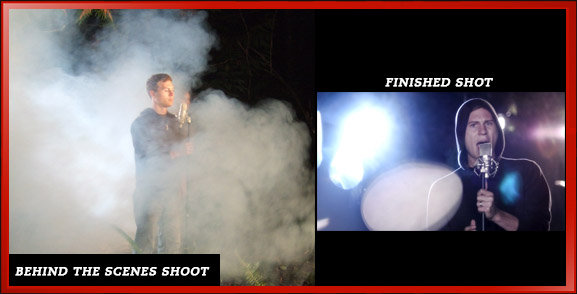 Seriously, consider that the cost of the production will be shared across the years it’s used as well.
Seriously, consider that the cost of the production will be shared across the years it’s used as well.
Break down the total cost by a factor of 10 or 5, and there’s your cost per year. Then compare these yearly costs to the cost of creating a new video each year by yourself – suddenly, the cost of a hiring a professional “to do it right” is pretty affordable!
Treat your investment in video as a business expense, and you’re thinking with the right frame of mind.
There is a lot more to producing a quality promotional video than simply setting up a camera and pressing record. Use of proper lighting, audio recordings, post-production editing, graphics and animation, music… altogether these things will add up to a nightmare if you don’t have an experienced producer. A professional will be faster and more effective than you and will produce a good, ready to go product.
How much you spend on a professional? I’ll get more into this later on – first, what about the alternative, going the ‘road less travelled’ route…
Adventure B: Choosing to Learn Video and Do-It-Yourself!
Making the choice to learn video production and do it yourself is a very rewarding experience. Just look at the popularity of self-created videos online now! Many companies are choosing to make videos in-house today, and the number will grow until most companies that do in-house marketing will have video production abilities.

I personally made the choice to learn video, and found it very valuable. When I began, I like anyone else, knew nothing about the process at all. How did I learn?
I read the manual for a Hi-8 camera, and played with the settings, learning what knob did what. Then I made videos with friends, and saw there was quite a difference between Hollywood and TV productions and our ‘films’.
I learnt that sound was important, so I began plugging a microphone and cable into the camera “news TV” interview style, and recording that people that way. Then, I figured out lighting was actually something that was planned and designed for.
Since I was still shooting Hi-8 video tape, computer “non-linear” editing wasn’t an option – not till the year 2000 and I got an iMac with FireWire (for plugging in new digital video cameras) and iMovie!
Then it all took off from there – with audio and lighting and now editing, the world changed, and the rest is history – the tools are cheaper and more abundant now than they were then. Today, an iPod Touch is an entire production studio in the palm of you hand.
Video is so incredible, and so rewarding. And now video is both profitable and easy to understand!
Learning How to Make Video is Fun
If this is a choice you’d like to make, it’s more economical than it’s ever been, and the learning tools, video marketing books and expert resources are better than ever before too!
And promotional videos can be made cheaply too – no reason to break the bank for your first video!
You can purchase all the equipment yourself off a reputable company such as B&H Vide: buying a tripod kit such as a Manfrotto Fluid Head Tripod with Ball Levelling Head , a simple camera such as the iPod Touch, get an editing app such as the venerable iMovie or Final Cut Pro and simple lighting kit…
By the way, don’t knock iMovie, it’s how I got my humble start in video production the year 2000 – iMovie is a veteran video-editing app, it’s been around for quite a while now! And iMovie it's as powerful as ever today!
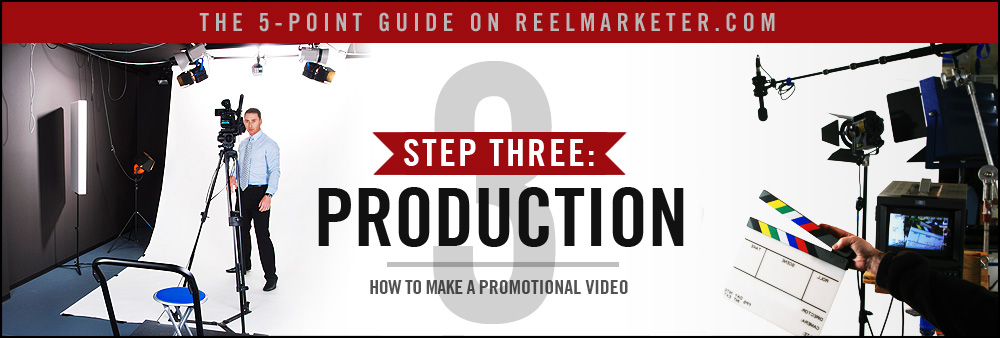
Step 3. Production: Filming Your Promo Video
Essential Stages of a Video Production
First, let’s look at the 3 stages that a basic video producer uses. We’ve touched on these earlier:
- Pre-Production. Preparing for the technical aspects to filming the video.
- Production. The actual day or days of filming the promotional video.
- Post-Production. Editing and fine-tuning the visuals and sound.
Simple.
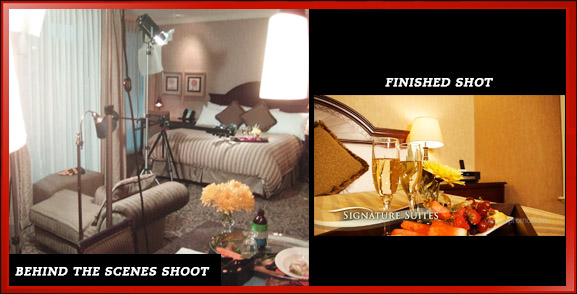 Just the technical stages of video creation, nothing fancy.
Just the technical stages of video creation, nothing fancy.
However, you are going beyond just making a video – you are a video marketer!
This video has got to actually work beyond just pretty visuals and sound – this video has to attain your goals.
Goals you strategized and identified with your creative brief.
So, when video marketing, pre-production takes on an additional stage called video marketing strategy, and there’s an additional stage after post-production there is a online distribution or marketing stage.
In Part 1 of How to Make a Promotional Video, I already covered the Stage 1: Video Marketing Strategy earlier – we’ve talked about promotional video genre, the goals, the video style, and your single message in the creative brief! If you answer those questions, you’ll have completed.
We’ve even touched on Stage 2: Pre-Production a bit too, but let’s get more in deeper..

Pre-Production
This is the preparation phase – planning out everything you need, getting it all assembled and tested. Meeting all the key people and contacts, and sorting out if they’re ready for the production, answering any questions they have.
Preparation is truly everything – it’s not a fun day when you arrive to set and find out you’re missing that one $10 cable that connects the microphone to the camera, without which there will be no audio, the lead actor also forgot his copy of the script, everyone is waiting in the cold outside to begin, storm clouds are brewing, it’s a weekend, and the store is closed, and this is the only day that everyone has available…
Location Scouting & Set Preparation:
Checking out set and/or interview locations, b-roll shots, spotting sun/shade areas, lighting concerns, human foot traffic, brands or signs in the shot, background noise/sound concerns, weather influences. Will the location require a legal permit or insurance that you’ll have to get well in advance?
Crew Selection:
The size of the crew depends on the size of the production, it’s style, where it’s shot, and the important aspects. A small crew would be one person doing it all – camera, audio while directing the on-camera person and keeping on top of production! A larger crew can feature a dedicated director (who looks after the actors/interviewees), an assistant director (who actually makes sure things happen correctly and runs the set), a camera operator, a location-sound technician, a director of photography or gaffer (in charge of lighting), a makeup artist and various production assistants (helpers). Nowadays, an onsite crew of 2-3 people is the most typical for the average online video.
Script Writing, Q&A Finalizations:
Writing and finalization of the script, read through (for accuracy), script variations prepared, questions for Q&A listed, live Q&A questions tested.
Production Lists & Schedule:
Listing of cameras, lights, electrical, sound and audio, transportation and production support equipment, pickup/rental dates/times, budget concerns, insurance needs, legal release, contingency backups and backups of backups, contact numbers and names, backups of backups, on-set food and drink preparations, testing all equipment prior to shoot date (super important to test the gear!)
Meeting & Prepping Interviewees or Actors:
Meeting interviewees and going over questions or concerns, wardrobe choices, expectations, preparation requirements, script/questions rehearsal read through, getting contact numbers, personal schedules, allergy or special requirements lists, etc.
Thorough pre-production can alleviate situations like what I described above –all veteran video producers have dealt with similar situations, and having the foresight to bring warm coffees and tea to warm spirits, extra copies of scripts and spare cables of all sorts would be an adequate remedy in this case!
If this is your first time, take the time to visit the locations you want to shoot at with the people you’ll be working with and rehearse, perhaps with your smartphone camera, and watch back at home and see how it looks and sounds! Testing really helps.
Production
 This is the fun day – the excitement that’s built up is released – it’s time to shoot the video! This is the step that most newbies think they should start with – just shoot the damn thing – but as you can see, it’s the third stage of six!
This is the fun day – the excitement that’s built up is released – it’s time to shoot the video! This is the step that most newbies think they should start with – just shoot the damn thing – but as you can see, it’s the third stage of six!
Good thing for you, you’ve prepared yourself with your video marketing strategy homework and pre-production planning. These stages will be pretty similar for each shoot – again, the smaller the production, the fewer the steps or people, so scale back in your mind if need be.
The following depicts a small-to-medium sized promotional video production with 2-5 production personnel (including yourself) and 3-5 on-camera people.
The Production of a Promotional Video:
Morning of: Arrive On Location
Let us assume you’re not shooting at your home or place of work – plan to arrive on location early. Either drop off all the gear you can the day before (making sure it’s secure from theft) or pack it up so that it’s ready to go. Fuel up – literally for the vehicles, and be sure that YOU have eaten a solid meal – and leave with the expectation to arrive an hour or two early. Yes, you need to be there before anyone else as this is your show and it’s up to you make sure everything is in order! Un pack and ready as much as the gear you can – make sure you keep everything within sight so that nothing is stolen. Predict future needs of the set and crew as best as possible.
Checklists: Set Up and Safety Procedures
Next to arrive is the crew that’ll be helping you. Hand out checklist copies of scripts, contacts and equipment to them, and recap the plan for the day. Cover all safety concerns; check that everyone has cellphones and/or radios, and their working. You brought a first aid kit – make sure it’s ready and available, and that everyone knows who knows first aid just in case. Have those responsible for equipment informs everyone else helping how to safety use the equipment (i.e. light stands used only with sandbags, and powered cables and generators coupled with GFCIs) – and what shouldn’t be touched at all – for instance, expensive, heavy film-lights!
The Talent: Meet with Interviewees and/or Actors
While the location setup is happening, and the crew is busily at work, the on-camera interviewees and/or actors will arrive. Meet with them away from the set, go over any last minute questions or concerns, and then take them on a tour of the set. If there’s time, rehearse with them their roles, and help them relax. Again, predict needs.
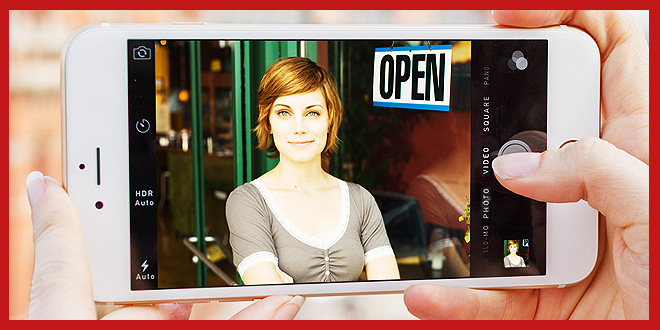
Check 1-2-3. Audio Levels and Recording Tests
Audio makes or breaks a production. The only way to know of if it’ll work is to test, and test early. You or your audio technician will have tested the gear the night before, and you’ve both already visited the location in pre-production to make sure it’s ‘sound’, but it’s time to test and playback again. Does the feed from the microphones work clearly? Does the playback work? Are the batteries in the microphone and recorder unit fresh? Does the camera’s feed work too? Are the levels good, or is there clipping? Is there any background noise? Check, check, check.
Lighting. Indoor/Outdoor, Setup & Control
Light isn’t made equal. If it’s outside, is the sky clear, or is it overcast? Either situation will offer it’s own challenges. Sharp direct sunlight creates harsh shadows on people’s faces creating dark eyes, and under nose and chin shadows. Overcast can make everything look flat, but better exposed and less harsh. Indoors, keep away from windows if you’re using inside light – outdoor sunlight and indoor lights have a different ‘color temperature’. ‘Daylight’ looks very blue when side by side with ‘Tungsten’ or indoor light. The best bet is to stick to one light temperature – shoot either inside or outside, don’t shoot from inside with a person in front of an outside-facing window.
The Lens. Camera & Tripod Setup & Operation
My favorite aspect of video production is the image – a beautiful shot conveys so much. Make sure the camera is charged fully, and the tripod’s legs are rock-solid before you attach the two together. Make sure the camera is level, and that it’s settings are tuned for the current location (white balance, exposure, gain and video-quality and frame-rate settings all play a role). Make sure the tripod pans and tilts well, and try a few recording and playback tests. Ensure the audio coming through on the microphones is set and working!
Action! Recording the Video
Here we go! Follow the plan. The first few takes will take the longest – see them as production tests. Give it a go, until the kinks get sorted out, and flow begins. Use the shot lists, the script, and the production timeline as a guide – hold these sheets with you, and refer to them always. Keep track of time, and the weather. Have fun!
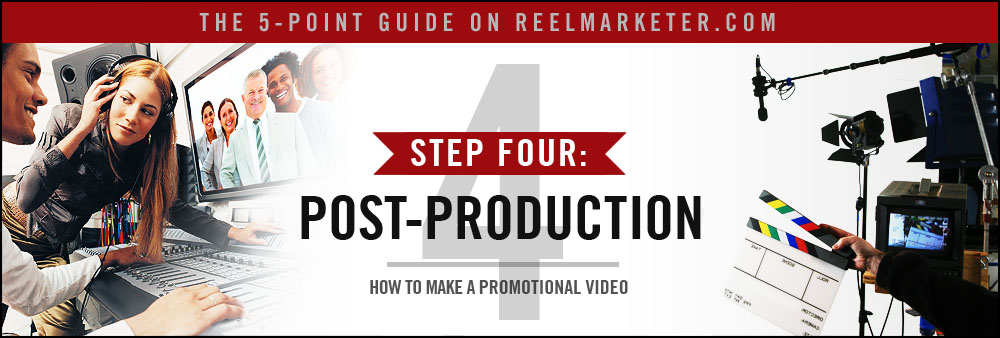
Step 4. Post-Production: Editing, Sound & Graphics
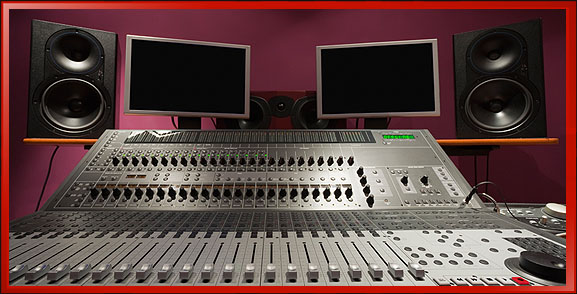 Putting it all together in the edit. This is post-production, the “after production” phase.
Putting it all together in the edit. This is post-production, the “after production” phase.
They say there are always three versions of each production; the first is the one you imagine or plan for, the second is the one you actually shoot, and the third is the one you put together in the post-production edit.
Sorry, there are no polls available at the moment.While the final product may not be exactly what the director imagined in their mind, the message should hold up and come through loud and clear in the edit:
The Stages of Post-Production
- Importing Footage & Conversion
- Backing up of the Raw Footage
- Editing video footage into a draft
- Reviewing Draft Edit with Client
- Adding music and/or supportive sound effects
- Adding titles and graphics
- Color & Exposure Correction
- Proper Export & Video Online Upload
The Best Video Editing Apps: Premiere & Final Cut
The two most popular editing apps for promo video editing are Adobe's Premiere Pro and Apple Final Cut Pro. iMovie will also deliver great results, but it's not seen as a ‘professional' app due to limited amount of fancy features. Both Final Cut Pro and Adobe Premiere Pro are popular and respected choices, and for good reason – they work well, they offer powerful options, and they each deliver consistent results. Either choice will get you to the finish line, both on time.
Adobe Premiere Pro (available for Windows and macOS)
![]() Adobe Premiere Pro is an excellent video editing app for video creators, ranging from professional and intermediate. Regarded as a pro-level app, if you use Microsoft Windows, this is the application choice for you – powerful, well supported, diverse feature set, and a tried-and-true editing interface.
Adobe Premiere Pro is an excellent video editing app for video creators, ranging from professional and intermediate. Regarded as a pro-level app, if you use Microsoft Windows, this is the application choice for you – powerful, well supported, diverse feature set, and a tried-and-true editing interface.
Final Cut Pro X (available for macOS)
![]() Final Cut Pro is an excellent application for macOS users. Essentially iMovie's big-brother, Final Cut Pro X (FCP X) is a powerful modern editing app. Similar to Adobe Premiere Pro, many high-end films and videos have been edited with FCP X. You can't go wrong with this application.
Final Cut Pro is an excellent application for macOS users. Essentially iMovie's big-brother, Final Cut Pro X (FCP X) is a powerful modern editing app. Similar to Adobe Premiere Pro, many high-end films and videos have been edited with FCP X. You can't go wrong with this application.
iMovie (available for macOS and iOS)
![]() iMovie is a basic, yet well-featured, editing application. Excellent for beginner video creators, iMovie is straight-forward for a user to learn the basics of editing allowing a person to quickly and efficiently be able to use the app's tools and to get straight into the editing immediately. You won't be overwhelmed with it's simplicity – and any skills you've learnt with iMovie can be transferred to future editing apps when you're ready, such as Final Cut Pro and Premiere Pro.
iMovie is a basic, yet well-featured, editing application. Excellent for beginner video creators, iMovie is straight-forward for a user to learn the basics of editing allowing a person to quickly and efficiently be able to use the app's tools and to get straight into the editing immediately. You won't be overwhelmed with it's simplicity – and any skills you've learnt with iMovie can be transferred to future editing apps when you're ready, such as Final Cut Pro and Premiere Pro.
Which Editing App is Right For You?
Your question is, which editing app is right for you apolnd your project?
If you're a newbie: iMovie (must have an iOS or macOS device)
Why? iMovie is the fastest and most efficient way to get a video edited and completed; very fast to learn, and the application will deliver the basic tools to get the job done.
If you use a Windows PC: Premiere Pro
Why? There is no Final Cut Pro or iMovie for Windows – Adobe Premiere Pro is your best bet! Adobe Premiere Pro will give you the tools to use to develop your skills from now into the future.
If you're a Mac user: Final Cut Pro or Adobe Premiere Pro
Why? Both Final Cut and Premiere Pro are professional applications – they'll provide great options for video creators and you can't go wrong with either one.
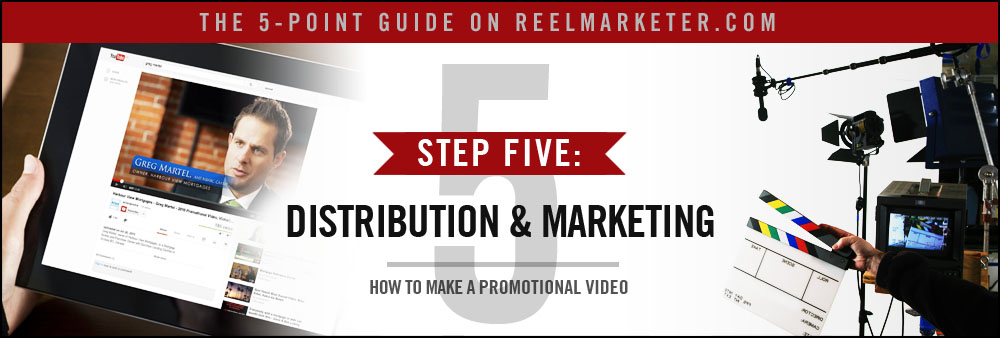
Step 5. Distribution and Marketing Success
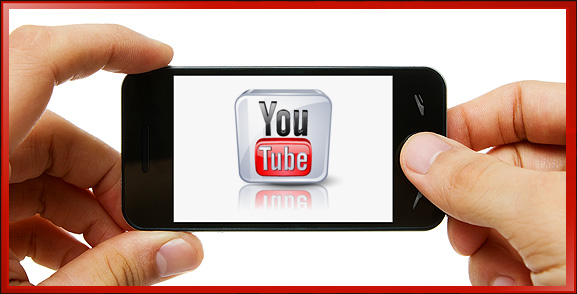 Once your video is complete, it’s time to distribute this promotional video and spread the word! Viral Video Marketing can be the most effective means of impressing your clients, so it does little good to let your video disappear into your blog.
Once your video is complete, it’s time to distribute this promotional video and spread the word! Viral Video Marketing can be the most effective means of impressing your clients, so it does little good to let your video disappear into your blog.
Upload and embed your video on YouTube (and vicariously Google), and video podcast it on iTunes, use RSS video feeds to spread it around, and send it to all your contacts using Twitter, Facebook and email campaigns. The more impressions your video gets, the easier it will be for search engines to pick it up:
Uploading a Promotional Video to YouTube
Step 1: Go to YouTube in your web browser: www.youtube.com
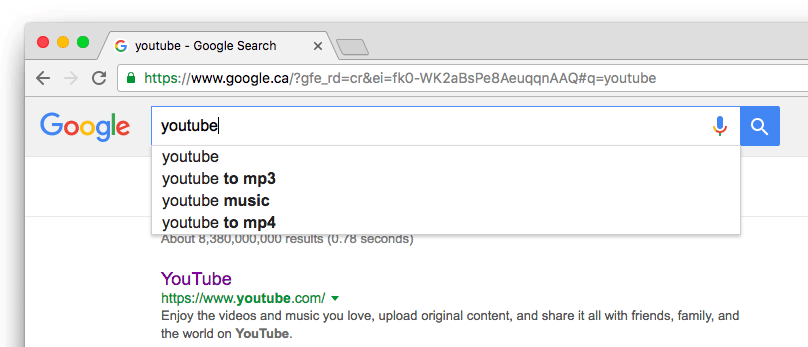
Step 2: Login using your Google account. (Create a new account if you need)
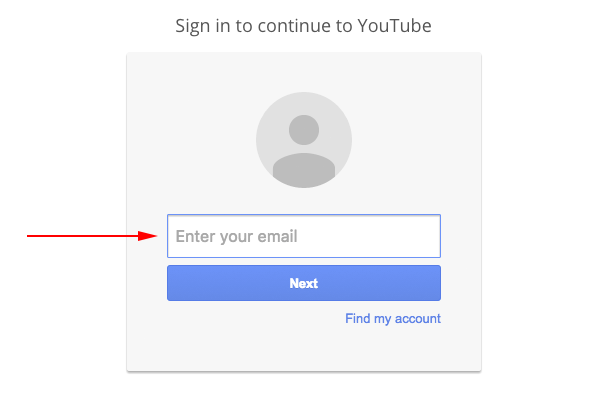
Step 3: Click ‘Upload’ button, at top right of the page
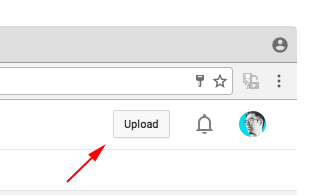
Step 4: Click ‘Select files to upload’. The page will change, and a ‘Processing’ bar will show the video uploading
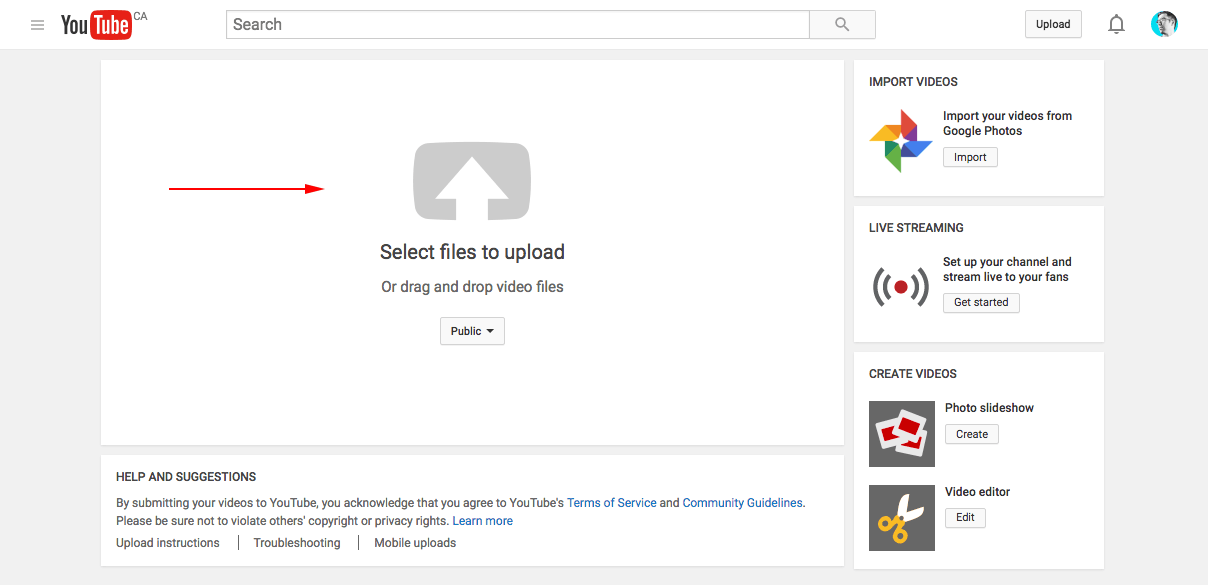
Step 5: The video file will begin uploading. A progress will show the upload, depending on the file size the video, a timer will show an estimate for the amount of time the upload will take.
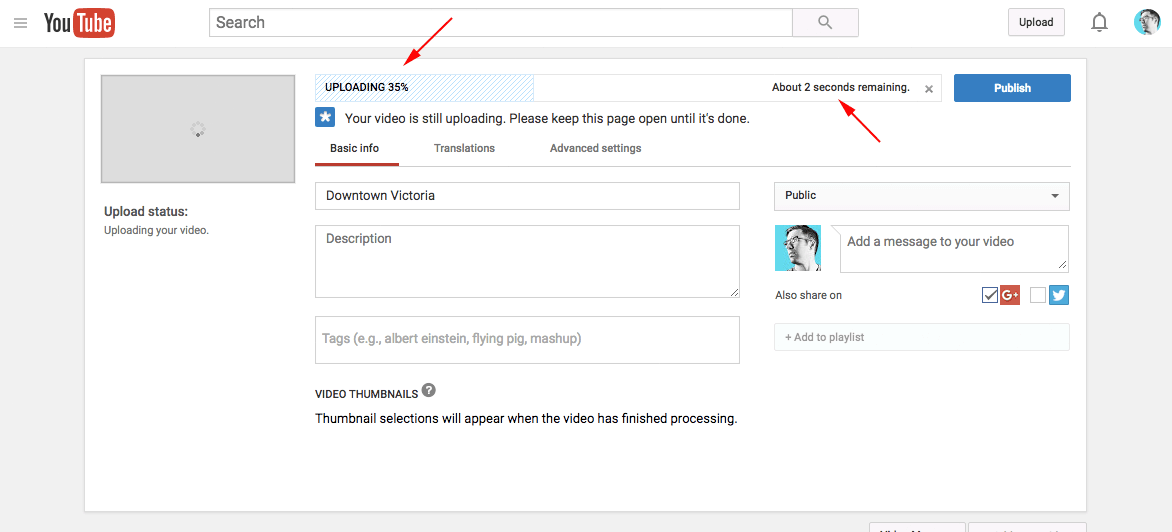
Step 6: Begin by typing into the text boxes information about the video; title, description. A title should make logical sense and use concise, regular language, but in a 140 or fewer characters. The description can be a lengthier explanation.
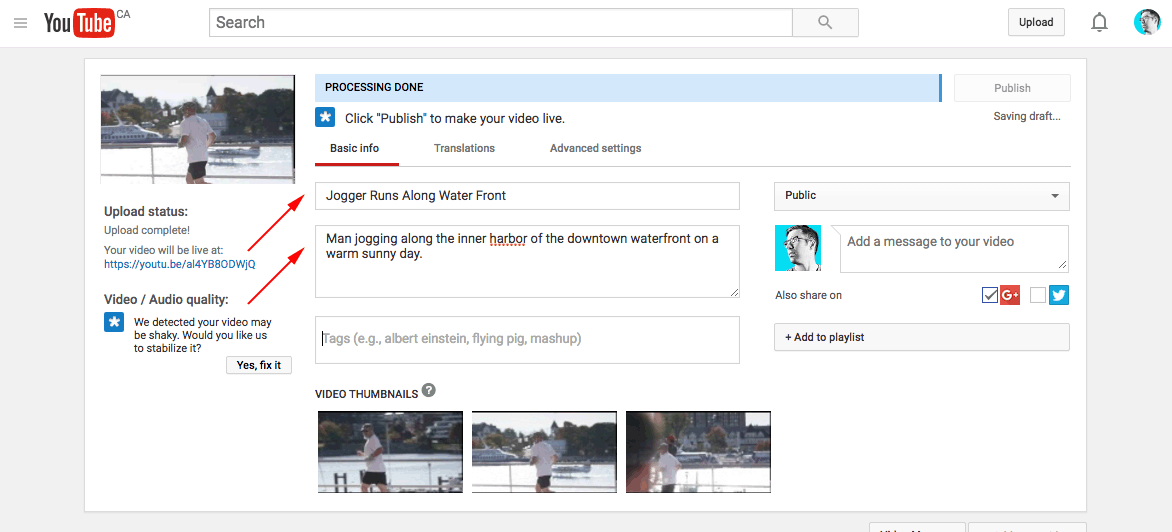
Step 7: Tags (keywords) can be one word each that are associated with the topic.
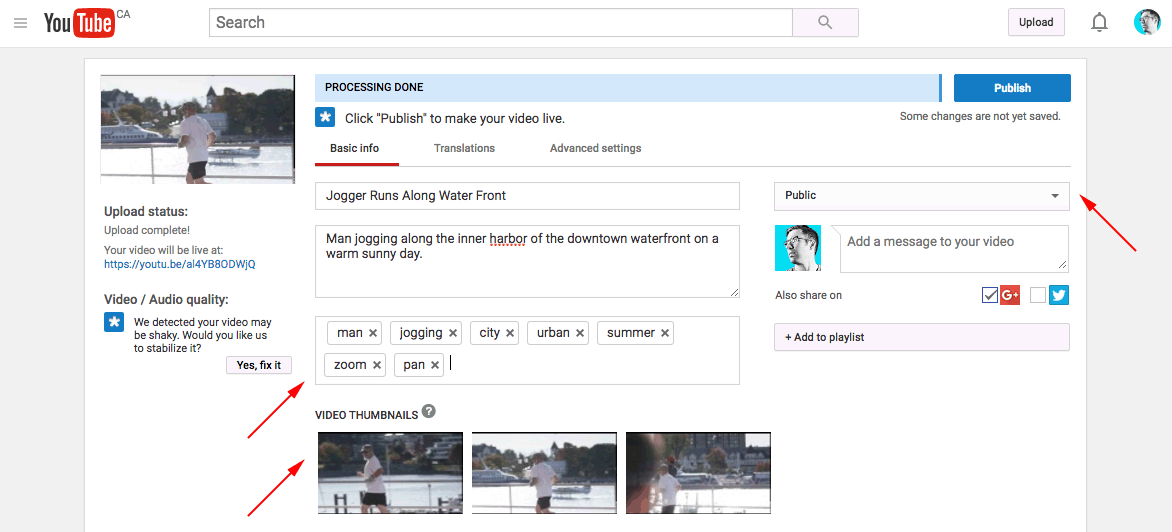
Choosing Where Video Appears: The default is ‘Public' – your video will be available to be seen by anyone viewing your public YouTube page's channel, or searching for it. ‘Unlisted' will allow people who have the direct URL only, and ‘Private' is only for you to be able to view when you login to your own YouTube account.

Optional Step: Advanced Settings are available – not needed, but you can enhance your video here if you wish.
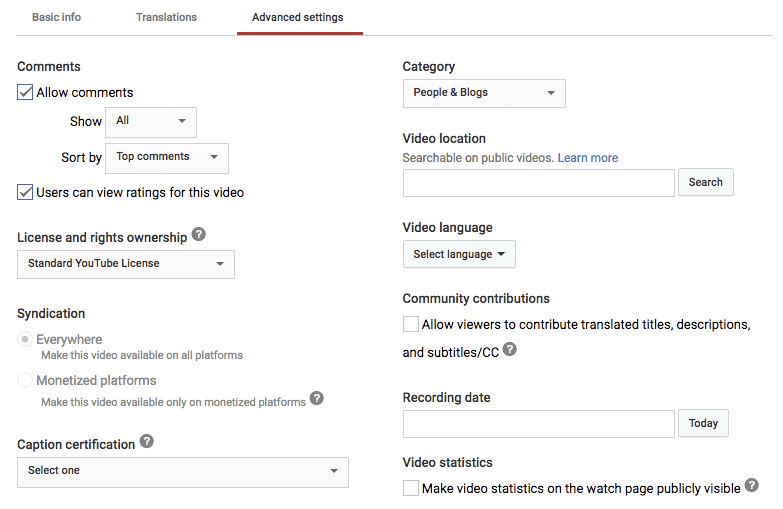
Step 8: Once the video’s progress bar is complete and you have filled in the information you want, click the ‘Publish’ to make the video now available to be viewed.
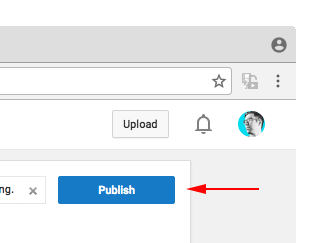
Step 9: The page will refresh – you can ‘Share’ or ‘Embed’ or ‘Email’ the video from this page. The three options in greater detail:
Share – You see a website link for the video you can copy and paste to send to people, or click on your desired social media platform (Facebook, Twitter, etc.) if you wish to share it there on your feed.

Embed – You can copy the code snippet and place it in your website to embed the video. You can define the size dimensions of the video using controls.

Email – Fill in a person’s e-mail address and a message to have a link of the video sent to them.
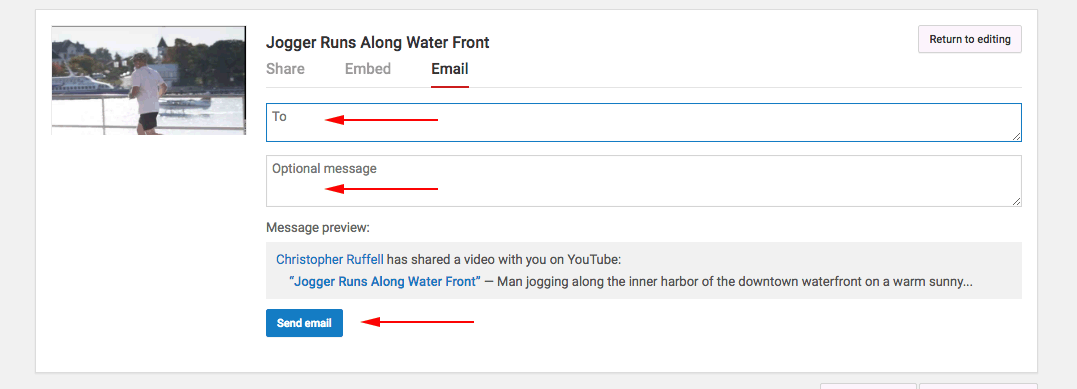
With some proper online marketing, your video could be the first thing people see when they search for your industry in Google – this is key.
To continue on with a more in-depth information, Sign Up for How to Make a Promotional Video Tips.

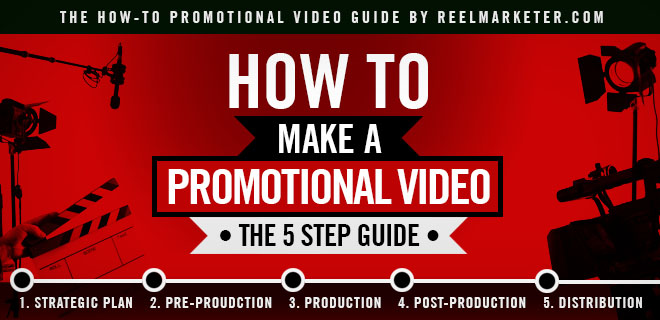

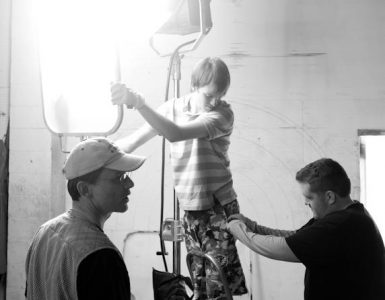


Hey good videos really do effect on your business, as a good advertisement or an eye catching video clip can help alot in business. get good promotional videos at an affordable price.
DreamSpace Productions
Thanks for your comment – and I agree, absolutely!
The businesses that don’t invest in decent video won’t get good results and naturally will never see the value – those that DO invest wisely will see results! By investment, I also mean in the video STRATEGY – planning covering the pre-production and post-production and distribution.
One gets what one puts in, for sure. You get what you pay for, or, you get out what learning time and effort you put in – makes good sense to invest wisely in oneself!
Hi Chris, im now stalking you on google and twitter! Im just starting to look in to promotional videos to promote my company so need all the advice i can get to make sure it’s done properly. Also bookmarked your site, thanks for the article!
Hey Peter,
I’m glad you’re find this my article and Reel Designer a useful resource – thank you so much for letting me know, I find your input very encouraging! After hearing what readers want more of, I’ve got a whole slew of upcoming articles that will be right on target!\
The stature of many of new upcoming expert interviews is impressive – these guys are the leaders for the entire industry! Add to that, a whole bunch of very practical tips in the form of written articles of the beginner and intermediate.
It’s going to be exciting, cheers Peter!
There are so many camera choices available – overload!! What’s a one-stop-does-all camera option?? THE camera for making business videos, right now. That does’t break the bank. THANKS!
Hello Jose, I know, cameras can be over whelming!
You may use our Top Gear Guides lists to draw up ideas on what camera to get as they change year to year – next, THE camera to get depends on your budget. If you want the all-round camera to make video, it still comes down to a few questions: 1) No-Budget, 2) Low-Budget, 3) Higher-Budget
1) No Budget: No Budget means you have zero dollars, or a mere $100-$300 US you can spare, or if you’re a novice looking to make your very first video, don’t buy a camera, use your smartphone! iPhone and Android smartphones have very capable cameras and editing software can be had for free or just a few dollars. An iPhone coupled with iMovie for iOS (which costs just five dollars) will produce very capable videos when used correctly – there are guides here on Reel Designer to study how! The iPhone will not limit you – it’s a full-fledged production studio in your pocket! So, if you’ve never made a video before, follow the guide and purchase iMovie on the App Store and use your iPhone to make a video. Use available lights you already have, borrow a tripod, make a plan and film your video. If you’re pleased with the result, then you can consider graduating to a higher-end camera for the next one. If you’re not happy with the video’s quality, likely have more reading and fine-tuning to do to learn how to properly use the iPhone to shoot, or you are ready to move to the next level – or you should hire a professional video producer to craft a winning promotional video for you!
2) Low Budget: If you have a few thousand, $1000-$4000, you can build your own capable studio setup. Look into purchasing a standard 1080P HD camera, tripod, tripod, lights and stands, and editing software. THE camera to get will change year-to-year – in 2012, the ‘IT’ cameras to get was the Canon 5D Mark II or the Canon T2i. Keep an eye on our Gear Guides to stay up to date!
3) Higher-Budget: If you’re looking to start a video production camera, get a real camera, like a Sony Cinealta, or Panasonic Varicam. Expect to line up $100,000 US… (probably not necessary!)
Jose, keep an eye on our Gear Guides to see which camera you should opt for – thanks for asking!
Hi Jose, everyone is shooting on Canon 5D at the moment, it’s the pro’s choice.
We decided to keep it pretty simple for our promo for the latest script our production company is working on. Just goes to show sometimes easier is better. Maybe you disagree? http://www.youtube.com/watch?v=OJp7J_WZndo
Hi Steve, thanks for the YouTube share of your video!
I agree – simple is usually a great way to go! Short combined with the simple is even better – :30 is a great length of time for a short online video.
Hi Chris..nice writing..very informative. Though I own an animated video company and my website is http://www.pixelgenio.com and generally I do not take up projects that include live shooting I went on reading your full post. Felt so interesting to learn about your experiences. Thank you.
Hi Moloy, thank you for leaving a kind note – I’m glad to hear that you found this guide of interest! PixelGenio looks to provide quality animations, well done.
If you are looking for an animated video here are another 5 tips you should keep in mind while you are at it!
http://www.videoexplainers.com/blog/index.php/5-tips-for-creating-an-explainer-video/
Thank you for sharing your relevant link, Adil. Animated videos certainly are popular, and don’t require a camera, and rather, have a different set and style to them.
Much appreciated!
Those tips are amazing, I’m gonna follow
Sarah, the tips keep growing – good plan on joining the Newsletter as new tips, tricks and lessons are shared! Take care.
Excellent write up, all promotional video makers should read this so that they can a re- look at how everything planned to the minutest details, especially on why quality is the vital factor. Clients too will get a brief insight into how much planning, time, effort and money goes into making a video stand out. Nowadays, advertising is about differentiating between similar products, within a short period. In addition, they should understand the need for hiring a professional video production company, otherwise; the eyeball catching efforts of the clients will become futile. You also hit the spot bang on by saying the do it yourself method does not guarantee quality.
Josef, always wonderful to have a constructive comment regarding the investment of time and planning that goes into a quality craft, of any sort, video or otherwise! Just ask Davinci… a statue is a bit more ‘important’ than the marble that it’s created from…
As you know, video is no different – it’s often difficult for an inexperienced individual to truly have an appreciation of the amount of learning and thoughtful application of diligent effort that goes into creating the finest quality film or television show. It may be made to look easy, but it sure isn’t if you want it to look great!
I do believe that different budgets fit different scopes of projects – DIY is fine for some people or businesses, but if you truly want a top-notch product, you indeed get what you pay for. DIY is a great way to learn the aspects of the craft, and understand the methodologies behind the decisions and budgets – I encourage those who are inquisitive to read up on the ‘how it’s made’ for any craft or product important to them – they may be very surprised!
Thank you again for your comment, Josef!
Hi Chris;
I’m currently filming a series of interviews and am wondering about the differences between the interviewees looking at the camera or at the interviewer.
Should it be one or the other , and can they be both. If you know what I mean.
Any advice? Thanks,
Andrew Coleman
Andrew, great question!
My initial answer is, choose one style, and then continue to use that style for the rest of the interview, especially if you’re interviewing more than one person. That said, I would highly recommend having the person look at the (off camera) interviewer for several reasons related to the fear of being on camera…
1) Having the interviewee look at the interviewer, who is off camera and asking them the questions in a conversation-style interview, will feel the most natural and help the person of interest keep their wits about them. Most people being interviewed on camera are not groomed spokespeople ready for media interviews at the drop of a hat, and therefore, will likely be nervous.
2) Looking directly into the barrel of a camera lens will feel very intimidating as the glass isn’t smiling and nodding with approval, instead, it’s just reminding the person that they’re going to be seen on camera at some point… (and all the associated social fears that come along with this prospect)!
2) As inferred above, the interviewer will give positive cues and feedback, and guide the person being interviewed along – eye contact will help ground the person on camera, and keep them focused on the questions and their answers, rather than their nervousness!
I hope this helps Andrew! I suggest you subscribe to the Newsletter for further tidbits like this down the road.
Great article, there is a similar one over here about the perfect length for videos of this type as well, might be useful for anyone going down this route:
http://www.mooviemakers.co.uk/whats_the_best_length_for_your_video/
Thanks Steve!
Agreed – sixty seconds is a good length for a longer form video! 30 seconds can be a sweet spot as well, as can 45 seconds. So much can be communicated in such a short amount of time, that even these “short” videos can feel long to the viewer! Wouldn’t want any longer than one minute most of the time.
omg greeeeat promo steps THANK YOU for this you have no idea how mutch this has helped…
THANKS.
Aubrie of baton rouge louisiana
Aubrie, thank you so much for your kind comment – it sure makes it worthwhile to know that the effort of this guide has assisted someone such as yourself – much appreciated!
Thank you for putting this great tutorial together, real good help for the beginners like myself. Coincidentally I make music for corporate videos but wanted to dab a little in video to help with marketing my music services. Thanks again!
Mik, I’m so glad to hear that you’ve found this guide valuable – that was the whole point, to share the lessons I’ve learnt and give back – and then continue learning more! The learning process is ongoing, so I expect this guide to keep growing as the process, technology, styles and business continues to develop and mature.
Producing corporate business video content is enjoyable – your natural ‘feel’ for the edit will lend itself well to editing and pacing for music production- enjoy!
There is a lot of great tips here. We have also written an article about how to choose the best video production company and what to consider during the process
http://creatureproductions.co.uk/good-video-production-company/
That’s a good looking article you’ve got there – what to look for in a good production company – well described points.
You are right – it is so important to have a good fit – making sure the company can produce good looking and good sounding content is one step, but being on the ‘same page’ so to speak to ease communication and goals is also oh so important.
Let me know if you’d like to have this article cross-published on Reel Designer!
Hi Chris,
Very detailed and interesting review. I believe you need quite some budget for that, not every small business can afford such promotional video. One solution for those with limited budget is using animated promo videos.
Hi Yaron, promotional videos offers a wide ranges in budget – you can go from free, or almost free. Free or ‘no-budget’ videos are an option (borrowing a camera and lights and using your smartphone to shoot, edit and upload) or go full Hollywood, shooting with actors, a film crew with Cinealta or Varicam cameras with expensive PL mount lenses in 4K!
Promotional video of course encompasses, as you suggest, animated promo videos, such as you linked to in your name – thank you for reminding everyone that animated explainer videos are certainly promotional videos too!
Hello Christopher,
I am interested in making videos about tourism specifically for commercial purposes. How will I best be able to easily make money out of this prospective plan?
Thanks for taking the time to reply to everyone!
Anna, wonderful plan!
I think the first steps you might look into are the specific special attractions or amenities your local area offers for tourism – these will be the points of interest most tourism operators’ guests (from hotels to restaurants) will be catering to – the guests will be coming for those reasons. Perhaps you can come up with a package that will tout these attractions better than competitors can using text, still photos or still graphics.
If you are new to tourism video marketing, creating a sample product promotional video would be the first step – this will be the sample you will show to restaurants, hotels or tourism operators to show them your ability to sell the attraction, and convince your potential client that you can do the same for them!
If possible, do a few of these videos in different styles to show the scope of your ability – and then propose to a company that they could hire you.
I hope this helps, let me know!
I got to help out with a promotional video for my friend’s biking company a few months ago. I didn’t pay or get paid at all, but I loved being a part of the filming process. I really enjoyed seeing how it all works and fits together. We took hours of raw footage to compile into about a 3 minute video. Thanks for the information about the process. I got a good insight to the editing side of things that I didn’t necessarily get to see during the filming.
Hi Serge,
That biking company promotional video sounds like a terrific experience, one where you got to be exposed to the joys of creating video! There’s certainly a science to the magic, isn’t there? It is quite interesting to see how all the aspects of the behind the lens aren’t as seamless as they appear when the finished product is released, but when it ‘clicks’ how and why each step is done to reach the pay off, it is very fulfilling, as you imply here.
I am pleased to hear you found value with the steps provided here – thank you for taking the moment to share your experience!
This is a great post – has helped me a lot, however, I have a question for you…
I am working on a promo video for a barbers shop, and I am struggling with the story board and making the video plush, stylish and slick – whilst incorporating images and videos clips of the services they offer.
I am using PowerPoint2013 and Camtasia to edit and create the visuals – but it all looks too gimmicky and I am a little lost.
I am trying to work my way through your structure, defining the purpose, the single thought, the target audience etc, but this hasnt led me on to working out the best flow for the video from start to end.
Any thoughts.
Thanks
Mike
Hi Michael,
I am glad to hear this article has assisted you with your promotional video so far!
It’d be great for you to share the promotional video you’re making for the barbershop once it’s complete, or if you’d like feedback while it’s being created. Moving on to your questions…
The idea of the storyboard is to have a visual walk-through of the promotional video’s visuals before shooting commences. Mimicking other well-produced promotional videos for other barbershops would be a good starter step – does one video show an image of sheers, and a happy customer? Sketch that out on your storyboard, and see if it’d fit the customer’s message.
But first, yes, sit down and work with your barbershop client and complete a Creative Brief or at least the most important aspects of one; the main goal (more customers?), the target audience, how they’re going to be reached (website and YouTube?) and what the call to action or offer is (come in today for a great hair cut?) Have your client agree on these aspects first – a single answer per question is fine. This video should be short and sweet!
You mention that you’re using Microsoft PowerPoint to create the visuals – it sounds like you’re avoiding using a video camera for the “b-roll” visuals, and just using still photos. I imagine the fact that you’re just cutting or using transition effects between each still shot, rather than using an ‘real’ video of the shop is reducing the production value of the promotional video. The viewer, instead of feeling like they’re ‘actually being there’ will simply see still images, which feels more removed and less real.
I recommend at least getting a few real video shots. A smooth pan with a video camera, even an iPhone mounted on a tripod, would feel far more real. I suggest video for at least the opening shot, (showing the sign and then a tilt down to the door), a wide shot pan of the interior (complete with customers in the chairs) and then maybe moving to a few more close-up shots of satisfied patrons getting tended to, and perhaps the smiling and chatty barbers doing their work. These few video shots as a base will be a great start – then you can layer on still images with Camtasia video editing software.
I recommend your still images are taken with the iPhone as well – this way the camera’s lens wide, tone, sharpness and color characteristics will match the video, making the video as a whole seem more together and less gimmicky.
Your promotional video need not be long or complex to be effective. Again, take a peek at other barbershop videos on YouTube to get an idea of what works, and use those videos as a basis for your storyboard and creative brief’s goals!
Great feedback Chris,
I might have miss worded it before, I do have a lot of real video – too much in fact – but most of it is unusable as I took the videos with my Galaxy S5 as it has HD Video capabilities and a 16MP Camera, however, I was later to find out that you must always shoot all video whilst holding the phone in a landscape position! Some video’s I took portrait, and when uploaded to edit on the PC it shows as landscape but sideways (if you get what i mean) which now i know, I will always shoot landscape unless I purposely plan to use portrait video stlyes.
I’ve worked through your post and made and tried to answer/fill in the blanks as much as I could, obviously most of the work has already been done so I am back tracking – but its probably a good idea too as there is a lot that needs to be addressed and changed.
Sadly the Barbers don’t have much input on the creative, and they also don’t want to talk on camera (a little shy i think) so I am trying to make use of text animations along with images and video.
I have decided to sort of go back to the start and build out from there again – so i can have a clear structure, message and call to action (which I am kinda second guessing on the barbers behalf, but I will have a meeting with them soon to discuss further and to take some more video captures as the portrait ones are just not going to cut it.
Here is the brief as such:
Successful Promotional Video Creative Brief Questions:
Q: 1.The Purpose: What is my main core objective? Pick just one primary goal!
A: Services for Men – Haircuts, Shaves, Nails, Tans
Q: 2.Single Thought: What is my main core message? Identify the key takeaway idea or action
A: Traditional Modern Experience (Come and Experience…)
Q: 3. Target Viewers! Who is my primary target audience? Age? Sex? Interests? Income?
A: Men, All Ages, Varied Interests, All Income Levels
Q: 4. Reach Your Audience: Where might I reach this audience? YouTube? TV Ads? Facebook Video? Video Podcasts?
A: Facebook, Website, TW…
Q: 5. Call to Action: What is the single action you need to make?
A: Come to Westbourne Hair For Men Barbers for an experience to remember.
I will do some edits tomorrow and upload to youtube temporarily for feedback, but please bare in mind this was the first edit – not the final and now I am completely changing things about!
Thanks Again
Mike
Michael, great to hear you’re shooting actual video.
Yes, filming with the camera/smartphone in landscape mode is important, a great lesson to learn, regardless of when. I agree, it’d likely be worth returning and getting a few more shots with the Galaxy S5 in landscape mode. A tripod wouldn’t hurt either.
Good work on the Creative Brief sketch – I think your direction is sound. Everything leads up to the call to action – you want more customers to come to the Westbourne Hair For Men Barbers and you’re ‘selling’ the experience, which is the unique selling proposition (USP).
I believe a :15 second or no more than a :45 second promotional video with the shots you mentioned, a few b-roll shots and perhaps narration would work well. Perhaps a testimonial from a happy customer or two, and you’re set.
Looking forward to seeing where you take this Michael!
Thank you for this post. I just started a new job with a professor I worked for during college. He wants me to help make promotional video for our department and while I have the creative side, I lack the technical know-how. Your article has really helped.
One question though: For those on a limited budget, are there any suggestions you have for adjusting lighting in cheaper ways?
Hi Melody, I am thrilled to hear that this guide is proving useful for you as you create your own promotional video for your school’s department.
You say you’ve got a creative side already – this will be an asset that your college’s professor will be sure to appreciate. Fret not, the technical aspects can be learnt easily and will be skills that you will be able to draw upon in the future whenever you wish. Getting your project started is the most difficult part, and it sounds as if you already have begun.
Now, addressing your question about designing and adjusting lighting with within a limited budget.
I am glad to see you are pursuing options to create a better image, as lighting is important. I feel that almost in most cases any ‘clean’ light (light that isn’t tinted orange or blue or some other color) should help create a visual image that is more pleasing and professional looking. While professional lights are best suited for video lighting, desk lamps, work lights, and other light sources can be handy substitutions – this is where thinking creatively will serve you well.
Here are two points I’d suggest for inexpensive lighting:
https://reeldesigner.com/500watt_light
First, in a pinch I have used portable 500-watt work lights from Amazon or Home Depot in the past and bounced the lights off white boards and onto the subject – it worked! The issues with these lights is they have very intense-direct (literally hot!) light, but if you’re on an extreme budget, and are willing to take the time to diffuse the direct light through use of a bounce board or white sheet, you can create a pleasing image. Be very careful to avoid setting a sheet or board on fire, as these lights get very hot. You can also get 250-watt lights or LED lights as well, which are not as intense and may work better for you.
Second, I would suggest trying to get the lights up and above the subject – this is top-down lighting approach creates the most natural and pleasing look. The sun in the sky, as well as building ceiling lights and professional film lighting all shine down from above people in their daily lives – it’s a look we’re familiar with. Professional light packages have light stands that enable the lights to be hoisted up high – often six to eight feet in the air or so, and then the lights are pointed down onto the subject.
A simple suggestion would be to have the subject seated, and raise the lights by safely and securely placing them on top of office desk nearby shining on the subject person.
I wish you the best Melody. It would be great to hear what solution you end up using, and perhaps you can even share the finished result – I think other beginner video producers would also enjoy seeing the finished result.
Thank you for the content! OMG exactly what I’ve been looking for. No one ever tells you this stuff – the before & after.
I’m looking into a promotional video for my business, I’ve found some equipment for very very cheap. Just don’t know where to start with lights. I really want to learn for myself how to put videos together.. I can do it using your content 🙂
Hi Gustavia, I’m so pleased you were pointed towards this guide – I’m glad you’re getting valuable insight before you get really started!
It sounds like you’re planning on planning, filming, editing and distributing the video yourself – a true DIY (do it yourself) endeavor. Congratulations! It can be a fair amount of work, but you will learn so much and have the ability to create as many promotional videos in the future as you need. Or if you hire a professional in the future, you will truly understand what aspects go into the production, and really really be able to guide the process.
What equipment are you planning on using so far? Cheap is fine, as long as the gear will work.
The article “The Top 5 Cheap Gear Must-Haves to make your very first Promotional Video” will likely be of interest to you!
That article is a blend of production pieces that will still produce a good result. The lights on that list are as cheap as they get – do you have a budget that may include slightly more expensive lighting options? “Real” videography lights – complete with light stands – are a better way to go if you are investing in yourself.
The future of lighting for video and film is using LED lights – they’re not nearly as hot, and use less power, so you won’t overheat while filming and won’t blow power breakers!
You wanted cheap lights, so I did some looking around for you. I was looking to find a light set that was:
1) Very inexpensive (Cheap!)
2) “Real” videography lights
3) Have a reputation (other’s have bought and reviewed them)
4) And at least two lights so they match (you need more than one light – usually three for 3-point lighting setups)!
Looking around online, I found this set that may be cheap enough and yet professional enough for me to recommend:
Bescor LED Dual LED Light Kit.
I haven’t personally used these lights. But, they have almost 100 positive reviews online, which is good enough for me! I recommend them, if you have the budget for them. So yes, I’d personally buy these lights.. and I just may!
How else may I assist, Gustavia? Does this help? What other questions or concerns might you have?
https://www.facebook.com/FCFootlighters?ref=hl
This is the link to the page that has the first video I did using the lighting tips here (It’s the Sherlock themed video). It really helped with our footage. I’m trying to add more of your tips as I go. Thanks so much for the help!
Hi Melody, thank you for your update!
I see the video – yes, your lighting is certainly present! I am certain that it made a difference compared to the same room without light – I bet that was fun to create as well. I imagine you managed to borrow some basic work lights to create the scene. The ‘acting’ scene carrying along the story line is certainly an original way to explore the offerings of the College!
This is a really detailed article. Loved it. I am a fresher working in a company called toolbox-studio.com and this will really help. Its never bad to learn things before they are taught at work isn’t it?
This is a really detailed article. Loved it. I am a fresher working in a company called toolbox-studio.com and this will really help. Its never bad to learn things before they are taught at work isn’t it?
Hi! I am a student at USD and we have a promo that is due soon. I would ask my professor the questions I need but he is kind of a hard person to talk to 🙂 so what I’m wondering is a promo the same thing as a VOSOT? Also what’s the difference between the two and a profile in video production? I would appreciate any information you can give me thank you
Hi Monica, I hope your classes at the University of South Dakota are going well.
To assist with your question: no, a “Voiceover-to-sound” or VO/SOT is quite different a stand-alone promotional video. A VO/SOT is defined as “A TV news story during which a news anchor or reporter reads a script live as video is played up to a place when a news maker video/audio sound bite is played. At the end of the SOT, the reporter or anchor resumes reading with or without additional video.”
A VO/SOT is more broadcast television specific and fits more with a story or news item, whereas a promotional video is more of a stand-alone sales piece, commercial or advertisement. Promotional videos may range from :15 to 5:00 depending on the context (:15 for an online ad or TV commercial, or 5:00 as a sales video online or at a sales convention booth, etc).
Promotional videos require far more in-depth planning as they are stand-alone productions, which is why there is the 5 stage process of strategic planning, pre-production, production, post-production and distribution and marketing. The primary phase, strategic planning, is done with a creative brief, may include scripting, storyboarding, and call for use of actors and elaborate locations and sets. The production step will likely use lighting, ideal locations for rehearsal for the on-camera subject, multiple takes (due to the use of a script) and high-quality sound with the use of lavalier or shotgun style microphones.
The final step of a promotional video, distribution and marketing, will implement the goals for pushing the video online or where it’ll be shown – far different than a quick broadcast play with the VO/SOT.
An example of a standard VO/SOT I found on YouTube:
https://www.youtube.com/watch?v=ZW2SWDPGav4
Notice how simple this video is? Other than the announcer, the lighting and sound was very basic, no scripting, and the use of simple b-roll footage.
I hope this assists you Monica – best of luck with your classes at USD!
Thanks for good bits of advice! We followed them and created a promo video, that describes our services and approach in an original way. Check it out here: https://www.youtube.com/watch?v=IR2ktl5eYSU
Hi TechMagic, thank you for sharing your work. Glad that this guide was useful to you.
It’s a very slick looking video – smooth camera work, music, graphics and more. If I may, my only unsolicited suggestion would be that it took 12-20 seconds to get a sense of where the video was going, which is often where you’ll experience the largest drop rates. It’s very long intro and lead in before the viewer gets a sense of what’s going on.
As a alternative edit, i’d recommend beginning with the imagery and action cutting out the “Hi”.. and that pause too. Your audience will probably appreciate the video more if it started right at the :13 second mark, with the lines “I’m writing just to say thank you..” and continued on from there. You can always show that logo at the end, or as lower-thirds (bottom of the screen) graphic.
All-in-all, well done video TechMagic!
[…] Sources: https://reeldesigner.com/how-to-make-a-promotional-video/ […]
Yah that was good advice thanks for it and keep it up.
Arman, thanks for letting me know that you appreciated the steps outlined in this guide. Absolutely – we will continue to add to and develop these steps as needed!
Hi peter I’ve just started my production and am shooting soon so again i wanna know the way that i can promote my businesses and also my videos. And i have challenges when coming to cameras, so i wanna know that can Sony 70 zoom make good quality that at least people will appreciate?I’ve just started because i was at school studying busines
Hi Sipho,
Congratulations on starting your own video production business. I am confident to state that running your own business, and namely, a video production business, will be a very rewarding and exciting adventure with a lot of diversity.
I am uncertain which camera you are referring to – perhaps the 4K capable camera, the Sony PXW-X70? Even though I have not professionally used that model, Sony is a good brand, and it looks to be a good camera. I do like how it has a built-in zoom lens and audio capabilities – it is very good value if it’s your first camera.
If you haven’t bought a camera yet, and you are still considering purchasing equipment, I suggest you take a look at the ‘What video equipment do I need?” guide – it has various cameras and other equipment listed and satisfies low, medium and high budget levels.
Let us know which camera you’re looking at, and if there is anything else me or other readers may assist you with!
Great web site you have here.. It’s hard to find high
quality writing like yours these days. I seriously appreciate people like you!
Take care!!
Thanks so much – I really appreciate hearing this! I’m hear to help, let me know if you have any specific questions too.
[…] Reelmarketer.com (2016), 5 Steps: How To Make A Promotional Video | Reel Designer, available at: https://reeldesigner.com/how-to-make-a-promotional-video/, [accessed on: 11 Aug, 2016] Eventmanagerblog.com (2016), How To Make Your Event More Interactive, […]
Hello Chris,
I read the complete article, once, twice, thrice…
Worth reading for the video enthusiast.
I must say its a well-written post with an investment of years of study, experience, and work. I am saving the page for future reference. You have solved all of my doubts so no question for you. I sincerely thank you for the knowledge sharing. Keep the good work up. Cheers.
Hello Namita, thank you so much for taking the time to write me specifically and let me know how this guide has helped you. I am glad to hear that you’ve found real value, and furthermore, have taken the time to write letting me know so!
Sincerely, best wishes to you and your projects, Namita.
I’m am really impressed with this guide – bookmarked for future reference for sure. Thanks!
Hi Lisa – thank you for letting me know this guide is of enough value to you to bookmark – and comment! I really appreciate it! It’ll continue to evolve, so certainly do check back as your progress through your video creation journey. It’d be great to see what you’re doing too, if you’d ever like just ‘reply’ to a comment and share, thank you!
Wow amazing article guide. You almost never seen article’s this in-depath, very informative. Great steps to take thank you.
Hi Ankita – thank you so much! The article certainly took a lot of time, I’m glad to hear you felt the thoroughness was worth it. I wish you the best with your video projects.
An important leading article, lengthy and in depth, yet, still very readable and easy to digest. Thanks for this! Animated Explainer videos are great too and are very cost-efficient. All you need is a great team and a talented animator. And as a marketer, it’s good to utilize all the types of videos depending on the purpose, well done.
Hi Francis, I agree – in fact, in may cases an animated explainer video is downright preferable to a live-action recorded video! Software tech companies make great use of using explainer videos to describe their complicated SaaS (software as a service) Internet or mobile apps.
Thank you for sharing your perspective!
Great post! Very informative
Thanks for sharing the brilliant ideas.
Thank you Priyanka, indeed I will! This page will continue to evolve and grow and change as the ways of creating a promo video develops – stay tuned!
Video marketing services are becoming very popular as they are also very beneficial for business purposes if the content is unique and powerful. Very nice article though helped me alot and cleared some of my doubts regarding promotional video making.
Hi Scarlett, I’m glad the guide was helpful in your promotional video creation journey – thank you for sharing your observations!
[…] Well, I am about to let you in a little secret.. it’s actually a very cheap, cost effective, tried and tested way to promote your business and let people know who you are… PROMOTIONAL VIDEOS. […]
Excellent way of describing, and pleasant paragraph to obtain facts
concerning my presentation subject, which i am going to deliver in college.
Hi, I’m doing a promotional video for an assignment for my tech class, any suggestions for what to do it on?
Hi Andrew, there are many options, but all of them begin with using a Creative Brief – complete a creative brief, and your video’s goals, message, and style will all become apparent. You’ll avoid guesswork and have a clear end goal presented to you. As you’re working through your own creative brief, you’ll get a chance to decide what style of video you’ll go for, and The 5 Different Types of Video Productions: Examples and Differences will be a good article to check out as well. Enjoy the process Andrew!
Thanks!
[…] (2018). 5 Steps: How To Make A Promotional Video, Step-By-Step Guide. [online] Available at: https://reeldesigner.com/how-to-make-a-promotional-video/ [Accessed 15 Jun. […]
This guide is great isn’t it? I found it useful too – and we do promotional videos!
Hi Chris. Thanks a lot for your REALLY step by step guide. I own my animation company Yans Media and now I’m thinking about including shooting in our services. I’m sure that this is not outdated as you should start with basics, I believe.
This is very very good! One of the most complete explanations about the promotional videos! Good work.
Everybody needs to understand that video marketing is growing and people consuming this a lot nowadays and thanks for sharing tips for video marketing.
Hey, author nice article. Promotional video helps in building your brand. We are a branding agency and we are going to try this marketing strategy for promotion of our clients. Thanks for dropping down such a detailed and wonderful article.
I’d like to learn more about promotional video.it’s a great art that I am very interested in learning more about it.
The article is great, thanks for sharing such a worth content
Hey, I found This Article Very Helpful as animated explainer videos are superstars and it is not hard to understand why. They are the go-to-promotion tool for startups since they use a simplified model of communication
We At Alpasbox Provide Quality Energizing Explainer Videos Check out our Website:
Alpasbox explainer video productions
Hi thanks for sharing the how to make a promotional videos and it helps me for my career
Hi, I loved your this amazing post, keep posted such type of articles. It helps a lot of peoples.
We keep updating this article, so it will remain fresh.
I love articles like this that explain Digital Marketing so easily. It is indeed the marketing of the future – and we are actually in that future.
its really great video and this videos help any business thanks for sharing
https://explainermojo.com/pricing/